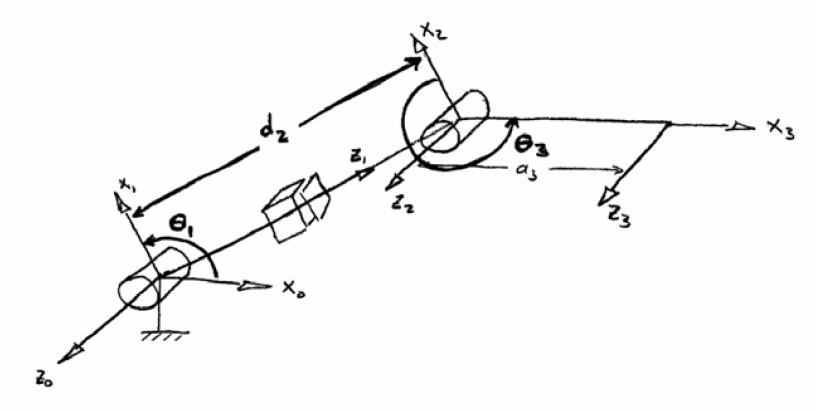There is something I need to verify.
Say we have the following RPR robot manipulator.
The DH table
yields 3 rotational matrices:
\begin{equation} R^0_1, R^0_2, R^0_3 \end{equation}
Using these rotational matrices, the linear velocity Jacobian matrices \begin{equation} Jv_1, Jv_2, Jv_3 \end{equation} and angular velocity Jacobian matrices \begin{equation} Jw_1, Jw_2, Jw_3 \end{equation} are derived.
Where each of these matrices are 3 by 1. So that combining the linear and angular velocity Jacobians yields the 6 by 3 Jacobian matrix of the manipulator:
\begin{equation} J = \begin{bmatrix} Jv_1 & Jv_2 & Jv_3 \\ Jw_1 & Jw_2 & Jw_3 \end{bmatrix} \end{equation}
The Euler Lagrange dynamics equation for a 3-DOF robot manipulator is
where the 3 by 3 inertia matrix is given by
where n is the number of DOF of the manipulator.
For the D(q) matrix to be 3 by 3, the linear and angular velocity Jacobian matrices must be 3 by 3 instead or 3 by 1.
Can you explain the mismatch of dimensions?
Am I supposed to augment the 3 by 1 matrices and obtain 3 by 3 matrices?



